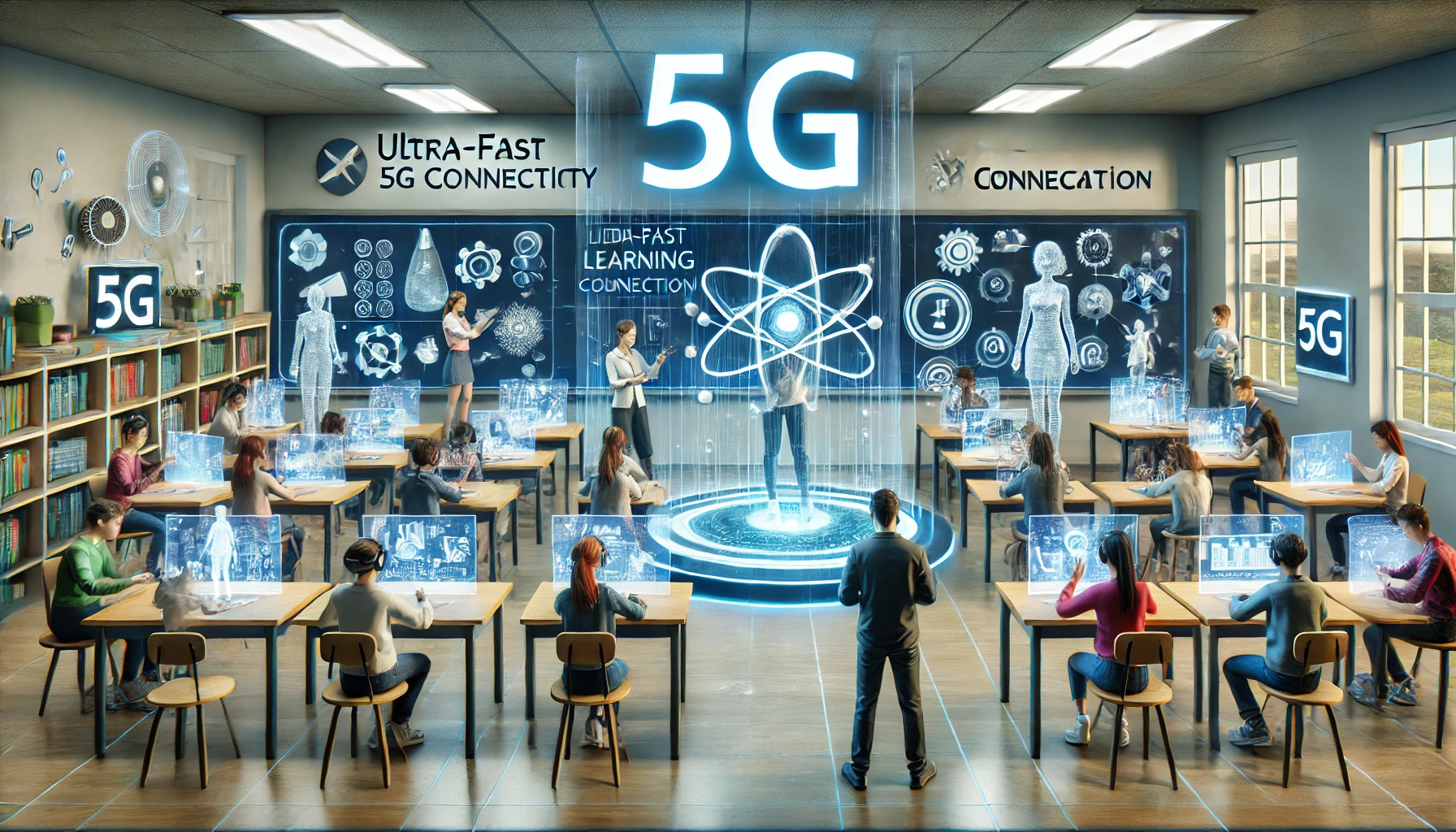The education landscape has undergone significant changes in recent years, with hybrid learning emerging as a flexible and innovative model. This approach combines traditional in-person instruction with online learning, creating a blended environment that accommodates diverse needs. The advent of 5G technology is now revolutionizing hybrid learning by enabling faster, more reliable connectivity and unlocking new possibilities for students and educators. This article explores how 5G is transforming hybrid education, addressing challenges, and shaping the future of learning.
What is Hybrid Learning?
Hybrid learning integrates face-to-face classroom experiences with online components, offering students greater flexibility in how they access educational content. It allows for a mix of synchronous (real-time) and asynchronous (on-demand) learning, catering to various learning styles and preferences.
This model gained prominence during the COVID-19 pandemic as schools and universities adapted to remote education. While hybrid learning addresses issues such as accessibility and personalized pacing, its effectiveness depends heavily on technology—a need that 5G is poised to fulfill.
The Role of 5G in Education
5G, the fifth generation of wireless technology, offers unprecedented speed, low latency, and the capacity to connect a massive number of devices simultaneously. These features make 5G an ideal enabler for hybrid learning environments, where connectivity is crucial. Here are the key benefits of 5G in education:
1. Seamless Streaming and Video Conferencing
With 5G, students and educators can experience high-quality video conferencing without interruptions. This is particularly important for hybrid classes, where live-streamed lectures or discussions are a core component. The high bandwidth of 5G ensures that videos are delivered in ultra-high definition, enhancing engagement and comprehension.
- Example: A physics teacher demonstrating complex experiments via live video can ensure students see every detail clearly, regardless of their location.
2. Real-Time Collaboration
5G’s low latency enables real-time collaboration on projects and activities, even when participants are in different locations. Tools like virtual whiteboards and shared documents become more effective as students can interact without delays.
- Example: Students working on group projects in a hybrid setting can brainstorm ideas, edit documents, and communicate seamlessly through platforms like Google Workspace or Microsoft Teams.
3. Enhanced Accessibility
Hybrid learning powered by 5G bridges the digital divide by bringing high-speed internet to underserved and remote areas. This ensures that students in rural communities have the same access to educational resources as their urban counterparts.
- Example: A rural student accessing interactive science lessons via 5G-enabled tablets can enjoy the same quality of education as someone in a metropolitan area.
4. Immersive Learning with VR and AR
Virtual reality (VR) and augmented reality (AR) offer immersive learning experiences, but they require robust connectivity to function effectively. With 5G, schools can implement VR/AR tools that provide hands-on experiences in subjects like history, biology, and engineering.
- Example: History students can virtually explore ancient civilizations, or medical students can perform simulated surgeries using AR tools.
5. IoT Integration in Smart Classrooms
The Internet of Things (IoT) transforms classrooms into smart environments where devices like interactive boards, sensors, and connected tools enhance teaching and learning. 5G’s ability to support a large number of devices ensures these systems work smoothly.
- Example: A smart classroom equipped with IoT devices can monitor student engagement levels and adjust content delivery in real time.
Overcoming Challenges with 5G in Hybrid Learning
While 5G offers numerous benefits, implementing it in education comes with challenges:
Infrastructure Costs
Upgrading to 5G requires significant investment in infrastructure, including 5G-enabled devices and network towers. Schools and institutions, particularly in developing regions, may struggle to afford these upgrades.
Digital Literacy
For 5G to be effective, students and educators must be equipped with the skills to use advanced technologies. Training programs are essential to bridge gaps in digital literacy.
Privacy and Security
The increased connectivity of 5G raises concerns about data privacy and cybersecurity. Educational institutions must adopt robust measures to protect sensitive information and ensure compliance with regulations.
Equity in Access
While 5G has the potential to reduce the digital divide, disparities in access to 5G-enabled devices and services can perpetuate inequalities. Governments and private organizations must work together to make these technologies affordable and accessible to all.
Case Studies: 5G in Action
Several institutions have already started leveraging 5G to enhance hybrid learning. Here are two examples:
1. South Korea’s 5G-Enabled Classrooms
South Korea, a global leader in 5G adoption, has integrated the technology into its education system. Schools use 5G to deliver VR-based lessons, allowing students to explore topics like space exploration and historical events in immersive detail.
2. Verizon Innovative Learning Schools (USA)
Verizon’s initiative provides 5G-enabled devices to under-resourced schools in the United States. The program equips students with tablets and internet access, enabling them to participate fully in hybrid learning environments.
The Future of Hybrid Learning with 5G
The combination of hybrid learning and 5G is paving the way for a more dynamic and inclusive education system. Emerging trends include:
AI-Driven Personalization
AI systems integrated with 5G networks can analyze student performance in real time, offering personalized recommendations and resources to enhance learning outcomes.
Gamification in Education
Gamified learning platforms powered by 5G can offer more interactive and engaging experiences. For instance, students could participate in multiplayer educational games that teach coding, math, or critical thinking skills.
Global Collaboration
With 5G, students and educators from different parts of the world can collaborate effortlessly, fostering cross-cultural understanding and knowledge exchange.
Conclusion
Hybrid learning, coupled with 5G connectivity, is transforming education by making it more flexible, interactive, and accessible. From seamless video streaming to immersive VR experiences, 5G enables educators to deliver content in innovative ways that cater to diverse learning needs. However, to realize the full potential of this technology, challenges such as infrastructure costs and equity in access must be addressed.
As 5G continues to expand, its integration into hybrid learning environments will create opportunities for students and educators to thrive in a connected, technology-driven world. The future of education is here, and it is more connected than ever before.
